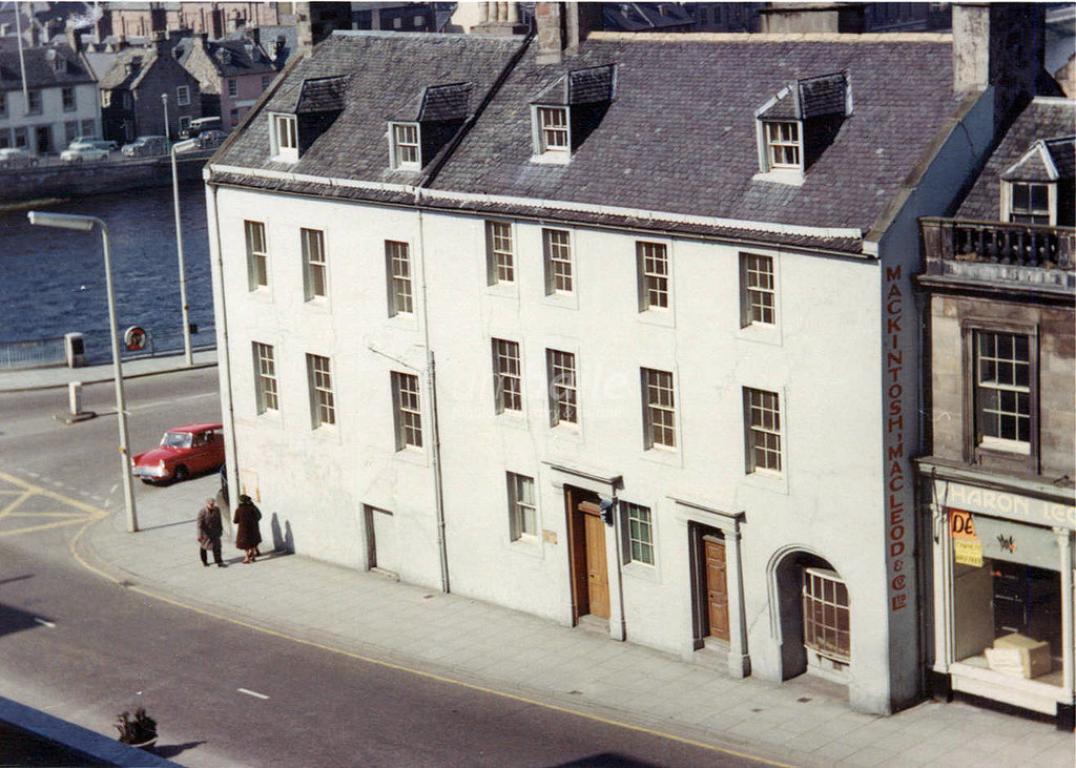
Famous Visitors to the Royal Burgh of Nairn: Mary, Queen of Scots
By Melissa Davies
This story belongs to a ten-part series of stories gifted by Nairn Museum. Many thanks to Melissa Davies, the director of Nairn Museum, for kindly gifting these stories to the Spirit: Stories archive.
Mary, Queen of Scots visited the north in 1562 to consolidate support for her cause. She was aged 20, and this was the first time she'd visited the north. She was accompanied by her brother, James Stewart, then Earl of Mar. Her character at the time was not yet discredited as it was for many people following Darnley's murder. Her route began at Edinburgh, then Stirling, on to Aberdeen, then Elgin where the royal party stayed for two days. They then journeyed to Kinloss where they stayed at the abbey, followed by a visit to Darnaway castle. They passed through Auldearn, at the time a hamlet of detached houses, the old kirk, a mill and a brew house.
Upon arriving in Nairn, Mary would have seen Nairn Castle, situated on the high bank of the river. At the time there was no bridge over the river Nairn, therefore it is likely that the royal entourage forded the river at 'Brocher's Brae', close to Harbour Street and the present Merryton Bridge (commonly known as the Sewerage Bridge). At the time, there would have been a single street with houses built on one side, gable ends on to the roadside and closes and vennels running off from the High Street. The Tolbooth would have been a low, straw-thatched building. As there are no records, we can only imagine the spectacular scene as the royal party arrived. The Queen was probably saluted by the townspeople and met by the provost, who was, at the time, John Rose of Broadley.
 Image provided by Am Baile/ Andrew Taylor
Image provided by Am Baile/ Andrew Taylor
Nairn High Street as it stands today. The building to the far right, with the spire, is Nairn Court House. Built in 1818, it was site of the former Tolbooth.
After passing through Nairn, Mary and her party set off for Inverness. Inverness in the 16th century was a small town, strategically important to the government for controlling the Highlands. Her army laid siege to Inverness castle and Mary was refused entry to the castle by Alexander Gordon, the Earl of Huntly's Lieutenant-Governor. With the help of the Mackintoshes and Frasers the castle was taken and Gordon was hanged.
As Mary caught sight of a patrol of the Royal guards from the castle walls, she expressed disappointment that she was 'not a man to know what life it was to lie all night in the fields, or to walk upon the causeway with a jack (armour breastplate) and knapschall (helmet), Glasgow buckler (shield) and a broadsword'. Mary lodged at a house at 28-34 Bridge Street. This house was demolished in 1968 to make way for the offices of the Highlands and Islands Development Board and the vaults of the old house were incorporated into the entrance hall of the new building.
 Image provided by Am Baile/ Highland Libraries
Image provided by Am Baile/ Highland Libraries
'Queen Mary's House', Bridge Street, Inverness in the 1960s. The building was demolished in 1968 to make way for a new office block.
After staying four days at Inverness, Mary then visited Kilravock castle where she was received by Hugh Rose (the tenth Baron of Kilravock) known as the Black Baron. Mary slept in the vaulted fourth floor room of the keep on September 15th. She wrote a letter to the Baron stating: 'Quhairupon we have thought guid to wryte unto you as one of our special friends'. Mary's son, James VI also made a royal visit to the north in 1598 and visited Nairn where he is said to have remarked to his court that he had seen a town in Scotland so long that the people at either end spoke different languages. The Fishertown people spoke English or Scots while the rest spoke Highland Gaelic.

Oil on panel, portrait of Mary, Queen of Scots, unknown artist. Read more on the National Galleries Scotland website here
We Want to Hear From You!
Share your stories and memories of Nairn
Stories are at the heart of what we do as a project and we are always looking to learn more about what the Highlands and Islands means to people who live, work, and visit here. Nairn is an iconic part of the Highlands, with a rich natural and cultural heritage to discover. We would love to know, what are some of your favourite memories or stories related to Nairn? Tell us below, we can't wait to hear from you!
Click here to share your story through our online story portal